Ahead of her appearance leading a panel of folkloric fantasy writers in a London book store, Alexandra Beaumont dives into the lore of Kernow and tells us why it’s so inspiring to her.
In the winding avenues and mysterious moors of Cornwall – or Kernow, as it’s known in the local language – the wilderness and its folklore lurks in every corner. The stories breathe with everyday mysteries explained through lore and wondrous tales.
We often think of folklore as a part of a bygone era that we’re bringing back, but the truth in many parts of the UK is far from it – some of these beliefs run deep rivers into our souls. Did you refuse to step on the cracks or not walk under ladders as a child? You were walking the paths of folklore, even then.
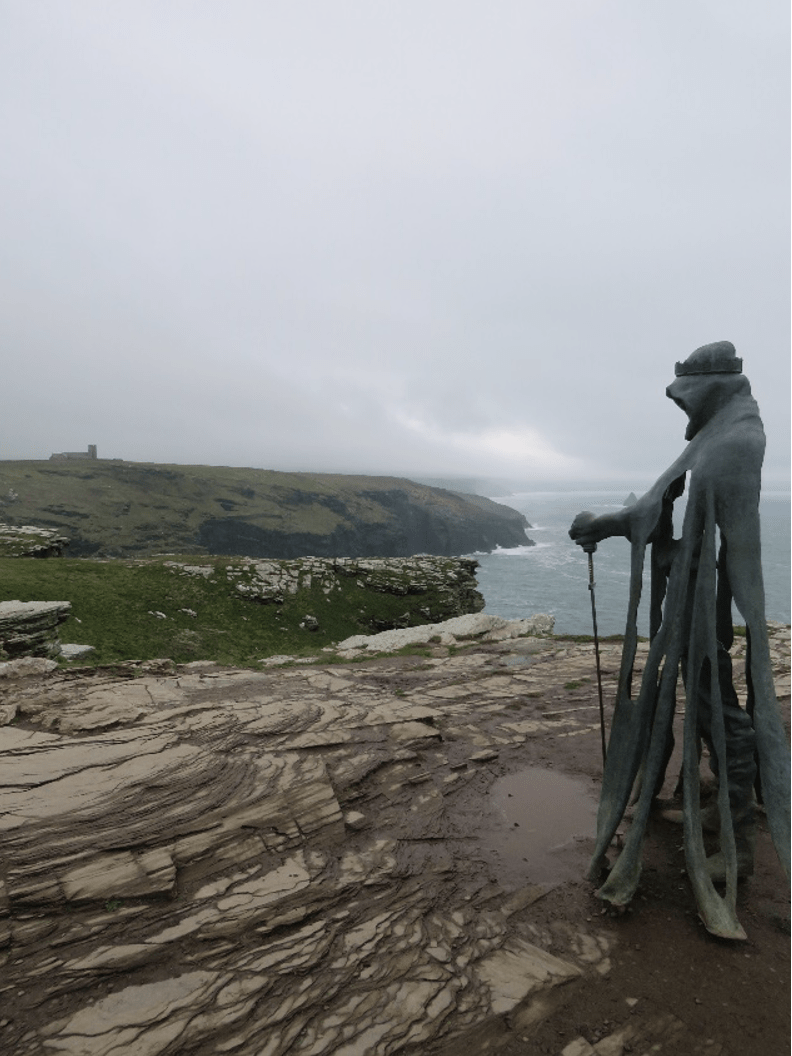
In Cornwall, mystery still exists and haunts every maw of the breathing land. There are some very obvious and well-known parts of Cornish folklore, but how contemporary some of the beliefs are shows how deep the veins of lore in the Cornish landscape truly run. They form part of the landscape, even to this day, and help us connect to something important it is easy to lose sight of.
In this day and age of technology and cities, we must remember the importance of the countryside and landscape – as much for our wellbeing as anything else.
(Pictured: Gallos, at Tintagel in Kernow/ Cornwall. Gallos is the Cornish word for power. Photo by Paul Martin Editorial.)
I think this is why folklore in fantasy and TV has become so popular. It reminds us of who we are, and what has gone before. Delve into the depths of thriving Cornish folklore and remember a little of the lands of old, and their vibrant tales…
Beast of Bodmin Moor
This Beast is a large phantom black cat the size of a puma said to stalk Bodmin Moor, eating livestock and scaring travellers.
In 1995, the UK Government led an official investigation into the beast’s existence, which is particularly fascinating – if you consider that there were enough stories even in the last 30 years that it was believed it could be real, it makes you wonder what was behind such tales.
If you search the internet now, Google still has top hits for ‘Beast of Bodmin Moor Sightings.’ I find this a really fascinating example of where old tales of beasts haunting landscape are still believed to this day, and in a significant manner. You could chalk this up to the power of conspiracy theories, but I think at least part of it is the power of landscape to further the imagination of the people who wander there…
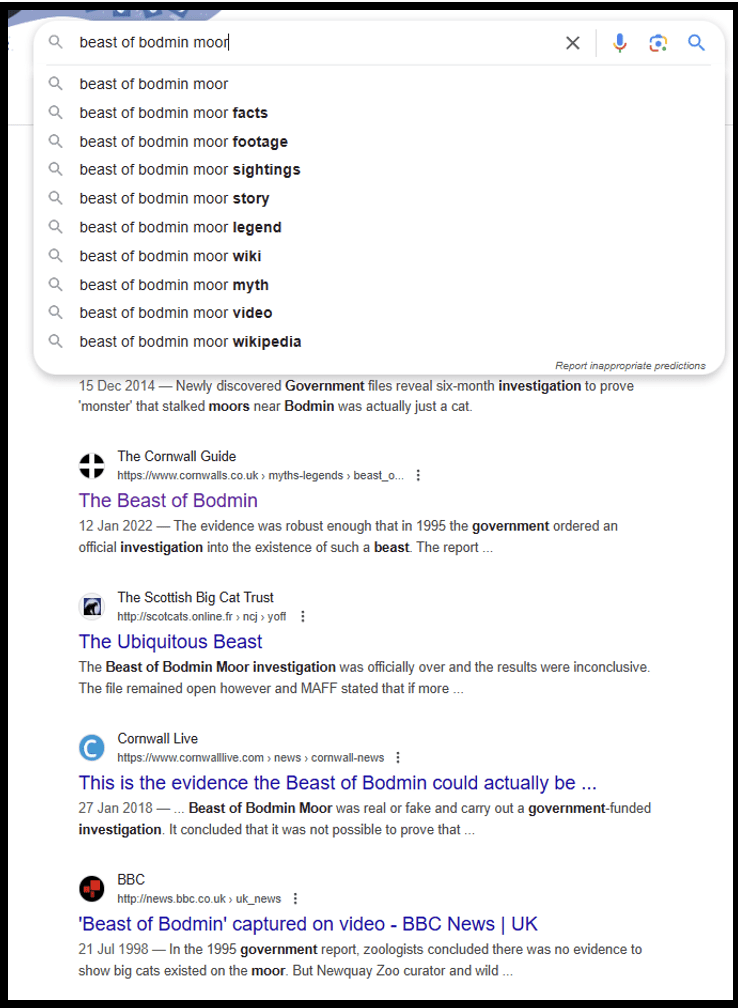
Standing Stones and Forts
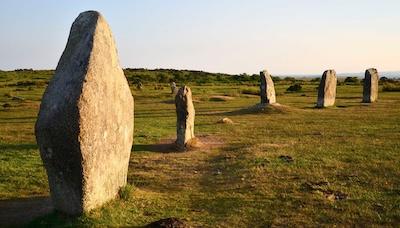
Scotland gets a lot of the press to do with standing stones, but in Cornwall the folklore is alive as well. The Hurlers, a stone circle on Bodmin Moor in Cornwall, it is said to be the remains of a group of men turned to stone after playing games on a Sunday.
(Pictured: The Hurlers, taken from the Cornwall Heritage Trust)
Caer Bran (raven fortress) is an Iron Age hill fort said to be a sanctuary from evil spirits. It is also believed to be a faerie dwelling or a haven for Cornish Pobel Vean (little people/ pixies).
The vibrant mines of Kernow
From blue john stone to tin mines, the culture as well as their produce is vibrant in the mines of Cornwall.
Knockers are spirits of dead miners in Cornish folklore. Their knocking warned of mine collapses, and miners left their crusts of pasties to appease them so they didn’t get mischievous and put miners at danger. I still don’t finish the crust of a Cornish pasty to this day, as my Mum would always say it is unlucky to not leave a bit for the Knockers.
The reality of this particularly folklore is entrenched in practicality, which adds another level of depth and interest: Miners hands were dirty, so the crust of a pasty served as a handle which could be discarded without the miner imbibing dirt and poisonous materials from underground.
(Photo of a Cornish tin mine near Penzance by Craig Cooper on Unsplash)

Birds in Cornish Folklore
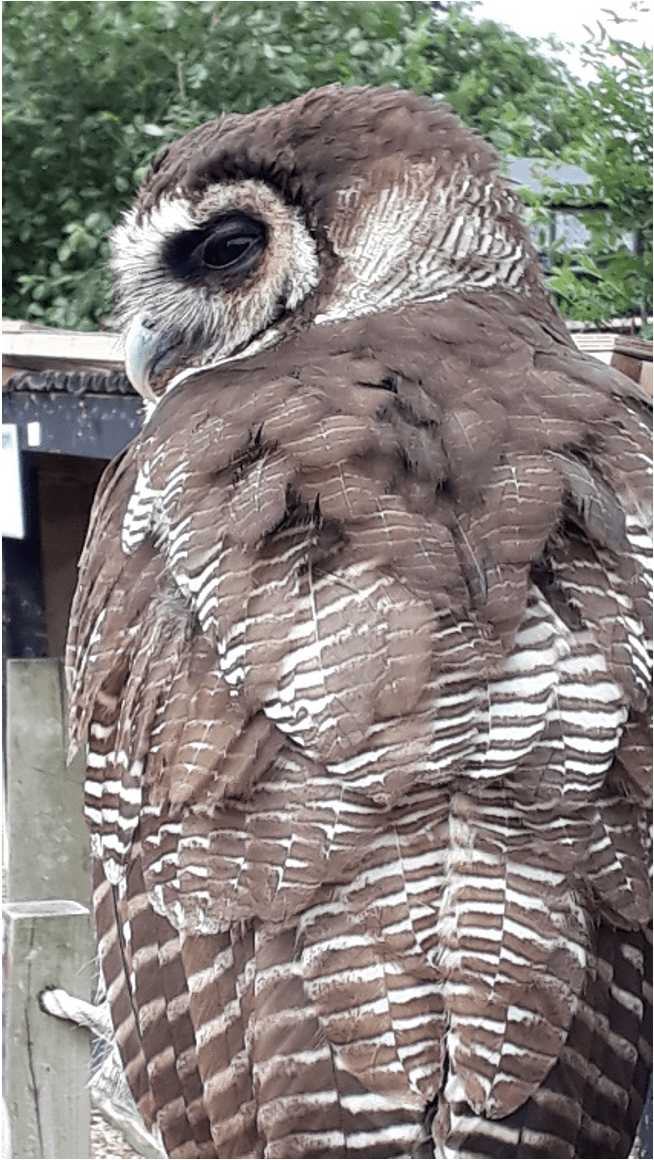
In another oddly modern piece of Cornish Folklore, the Owlman is an owl-like creature said to have been haunting the churchyard and wood in the village of Mawnan, Cornwall, since the 1920s.
To finish on a slightly more well-known piece of folklore…
In Cornwall it was believed that King Arthur didn’t really die, but was magically transformed into a chough. The chough’s red beak and feet are said to represent the bloody end of King Arthur’s human life. In Wales and Scotland during the 17th Century, where choughs would also have been common, the chough was known as the Crow of Cornwall.
A note on folklore, folk horror and landscape in Cornwall
Rather dramatically, I said earlier that the mystery haunts every maw of the Cornish landscape, but that’s truly how it feels to me. Every part of Cornwall is a gateway to a swirling vortex of strangeness and intrigue. This is but the tip of the iceberg, but it is an iceberg that is deep and vibrant part of Cornish stories that are alive and well today. Drawing on this wonderful vibrancy, where the mystical and the sinister lurk behind every corner makes Cornwall a perfect setting for folklore and folk horror, where the landscape breathes and haunts in equal measure.
It is where one goes to remember how to be wild and free, and that’s what I hope to breathe into my writing.
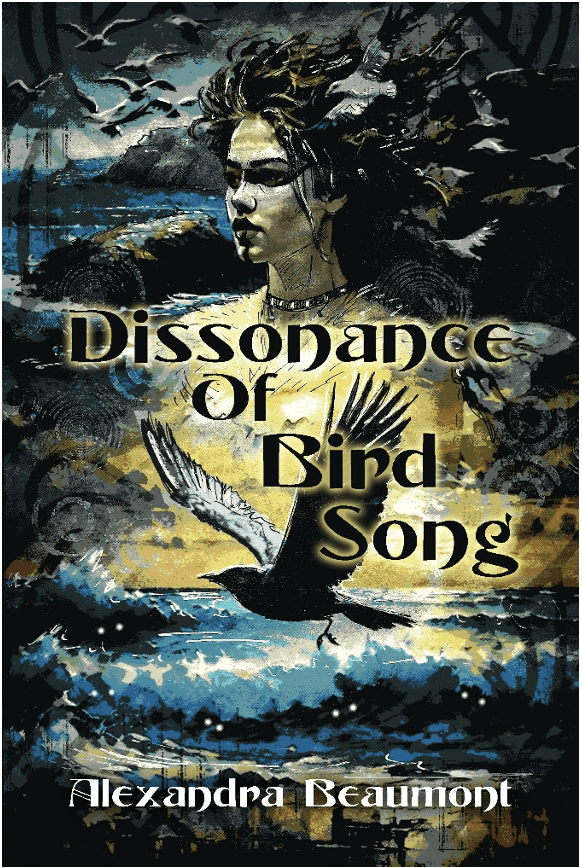
This Thursday, 7 November, Alexandra Beaumont will be joined by AY Chao, Lucy Holland and Anna Smith Spark at Waterstones Covent Garden to explore the deeper rivers of fantasy folklore. More details here.
Find out more about Dissonance of Bird Song, and Alexandra Beaumont’s other folklore fantasy novels here.


